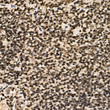| Post Translational Modifications | Phosphorylated in a cell cycle-dependent manner at Ser-158 by cyclin A-CDK2 and at Ser-10 by ATM in response to DNA damage. Phosphorylation at these two sites promotes the intramolecular interaction of the N-terminal domain with the helicase ATP-binding domain, thereby probably releasing the inhibitory effect of the N-terminal domain on its ATPase activity. Phosphorylation is essential for its chromatin remodeling activity. Ubiquitinated at the C-terminus. Ubiquitination by the CSA complex leads to ERCC6 proteasomal degradation in a UV-dependent manner. Stabilized following interaction with KIAA1530/UVSSA, which promotes recruitment of deubiquitinating enzyme USP7, leading to deubiquitination of ERCC6 thereby preventing UV-induced degradation of ERCC6 by the proteasome. Sumoylation at Lys-205 in an UV-radiation-dependent manner is essential for its transcription-coupled nucleotide excision repair activity. |
| Function | Essential factor involved in transcription-coupled nucleotide excision repair which allows RNA polymerase II-blocking lesions to be rapidly removed from the transcribed strand of active genes. Upon DNA-binding, it locally modifies DNA conformation by wrapping the DNA around itself, thereby modifying the interface between stalled RNA polymerase II and DNA. Plays an important role in regulating the choice of the DNA double-strand breaks (DSBs) repair pathway and G2/M checkpoint activation.DNA-dependent ATPase activity is essential for this function. Regulates the DNA repair pathway choice by inhibiting non-homologous end joining (NHEJ), thereby promoting the homologous recombination (HR)-mediated repair of DSBs during the S/G2 phases of the cell cycle. Mediates the activation of the ATM- and CHEK2-dependent DNA damage responses thus preventing premature entry of cells into mitosis following the induction of DNA DSBs. Acts as a chromatin remodeler at DSBs.DNA-dependent ATPase-dependent activity is essential for this function. Remodels chromatin by evicting histones from chromatin flanking DSBs, limiting RIF1 accumulation at DSBs thereby promoting BRCA1-mediated HR. Required for stable recruitment of ELOA and CUL5 to DNA damage sites. Involved in UV-induced translocation of ERCC8 to the nuclear matrix. Essential for neuronal differentiation and neuritogenesis.regulates transcription and chromatin remodeling activities required during neurogenesis. |
| Protein Name | Dna Excision Repair Protein Ercc-6Atp-Dependent Helicase Ercc6Cockayne Syndrome Protein Csb |
| Database Links | Reactome: R-HSA-427389Reactome: R-HSA-5250924Reactome: R-HSA-6781823Reactome: R-HSA-6781827Reactome: R-HSA-6782135Reactome: R-HSA-6782210Reactome: R-HSA-73762 |
| Cellular Localisation | Nucleus |
| Alternative Antibody Names | Anti-Dna Excision Repair Protein Ercc-6 antibodyAnti-Atp-Dependent Helicase Ercc6 antibodyAnti-Cockayne Syndrome Protein Csb antibodyAnti-ERCC6 antibodyAnti-CSB antibody |
Information sourced from Uniprot.org












